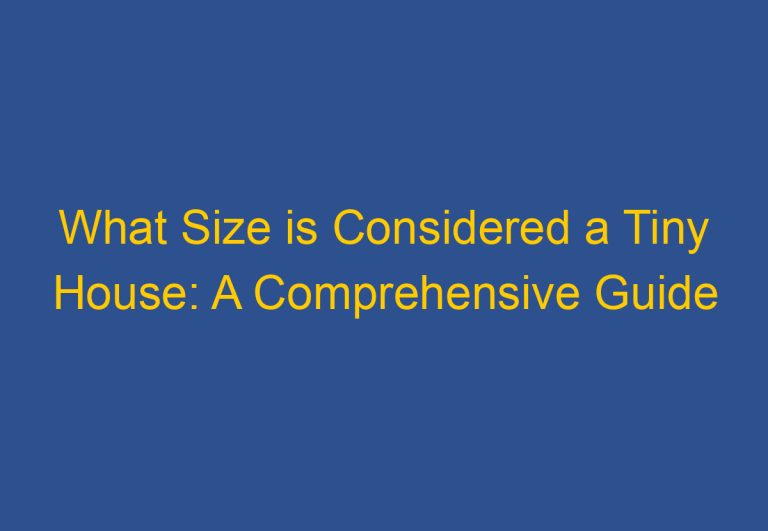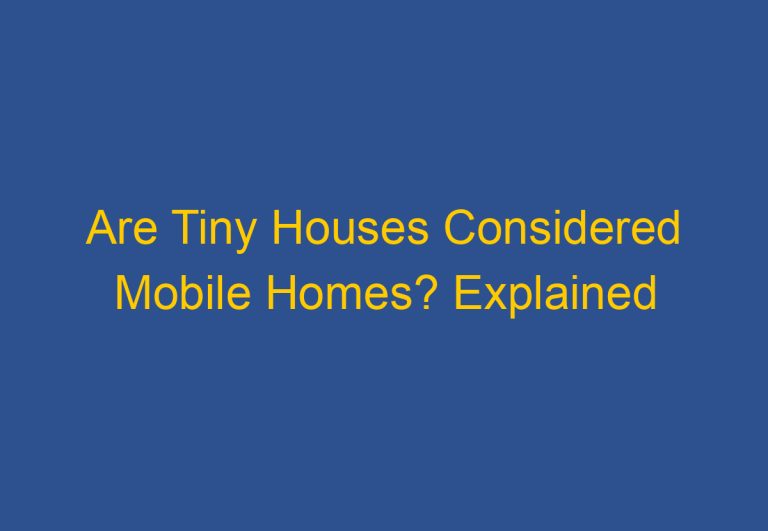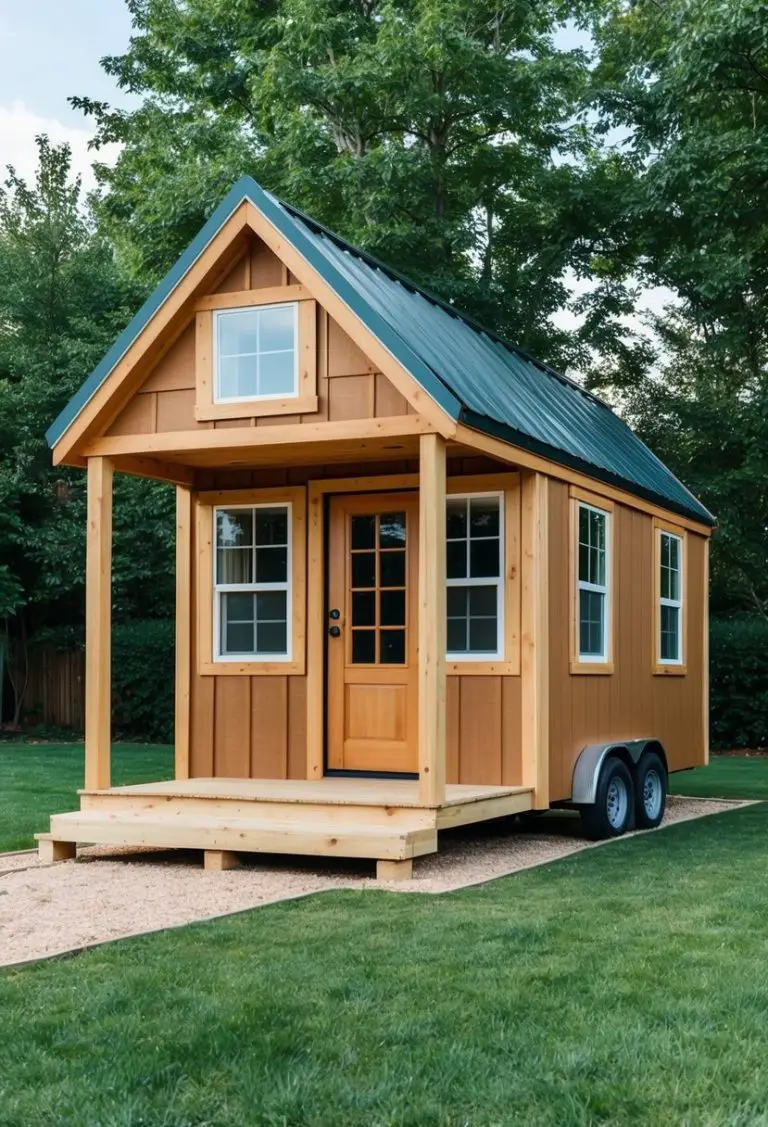Are Tiny Houses Legal in Minnesota? A Comprehensive Guide to Tiny House Regulations in the State
Tiny houses have been gaining popularity across the United States as a way to live more affordably and sustainably. However, many people are left wondering about the legality of tiny houses in their state. In Minnesota, tiny houses are a relatively new concept and there are specific laws and regulations that govern their construction and use.
According to the Minnesota State Building Code, tiny houses are defined as structures ranging from 100 to 400 square feet. These structures can be built on a foundation or on wheels, but they must comply with the same building codes and zoning regulations as traditional homes. Additionally, tiny houses on wheels are considered recreational vehicles and must meet the regulations set out by the US Department of Housing and Urban Development.
While there are regulations in place for the construction and use of tiny houses in Minnesota, it is important to note that the laws and regulations can vary depending on the county or municipality. It is recommended that those interested in building or living in a tiny house consult with their local government officials to ensure they are following all applicable laws and regulations.
Legality and Zoning Regulations
Statewide Building Codes and Tiny Houses
In Minnesota, tiny houses are required to comply with the guidelines of the Minnesota Residential Code. This code is the standard of construction that applies statewide for the construction of buildings, including tiny houses. The 2020 Minnesota Residential Code includes Appendix Q, which provides specific regulations for tiny houses. According to the code, tiny houses must be at least 8 feet wide and 40 feet long, and when erected, they need to be at least 320 square feet. Tiny houses can be built as prefab homes, modular buildings, manufactured homes, and site-built homes.
Zoning Codes and Accessory Dwelling Units
Minnesota’s zoning code and regulations vary by county, allowing tiny houses as accessory dwelling units (ADUs). As the demand for affordable housing options grows, some counties in MN have started to designate areas where tiny homes can be located. It’s crucial to understand the specific zoning codes and regulations that apply to tiny houses in each county. Zoning codes can dictate the minimum square footage required for a dwelling unit, the distance between buildings, and the maximum height of the structure.
Challenges with Municipal Zoning Regulations
Municipalities in Minnesota can have their own zoning regulations, which may differ from the statewide building codes and county zoning regulations. This can create challenges for tiny house enthusiasts who want to build or park their tiny homes in certain municipalities. It’s important to research and understand the zoning regulations of the municipality where you plan to build or park your tiny house. Some municipalities may require a special permit or variance to build or park a tiny house.
In summary, while tiny houses are legal in Minnesota, they must comply with statewide building codes and county zoning regulations. However, municipalities can have their own zoning regulations, which may create challenges for tiny house enthusiasts. It’s important to research and understand the zoning regulations of the county and municipality where you plan to build or park your tiny house.
Construction and Living Considerations
Building Standards and Requirements
When it comes to building a tiny house in Minnesota, there are several building standards and requirements to keep in mind. The Minnesota State Building Code applies statewide for the construction of buildings, including tiny houses. It is important to note that tiny houses can be built as prefab homes, modular buildings, manufactured homes, or site-built homes.
If you are building a tiny house on a permanent foundation, it must be at least 400 square feet in area. Accessory dwelling units (ADUs) and other tiny houses on wheels can be slightly smaller than site-built homes. They must be at least 40 feet long and 8 feet wide on the road. The livable areas must have ceilings that are at least six feet eight inches high, while kitchens and bathrooms may have lower ceilings.
Utilities and Infrastructure
Utilities and infrastructure are important considerations when building a tiny house. You will need to ensure that your tiny house has access to water, electricity, and sewer or septic services. Off-grid options are available for those who want to live off the grid, but it is important to note that these options require careful planning and preparation.
Location and Community Options
Location and community options are also important considerations when building and living in a tiny house. Tiny houses can be located on private property, in RV parks, or in tiny house communities. It is important to research zoning and building codes in the area where you plan to locate your tiny house to ensure that it is legal and compliant.
Tiny house communities offer a unique living experience and often include shared amenities such as community gardens, laundry facilities, and recreational areas. However, it is important to note that not all communities allow tiny houses and there may be restrictions on the size and type of tiny house that is allowed.
In summary, building and living in a tiny house in Minnesota requires careful planning and consideration of building standards and requirements, utilities and infrastructure, and location and community options. It is important to research and understand the zoning and building codes in your area to ensure that your tiny house is legal and compliant.
Frequently Asked Questions
What are the zoning regulations for tiny houses in Minnesota?
Zoning regulations for tiny houses in Minnesota vary depending on the location. Some cities and counties have specific zoning regulations for tiny houses, while others do not. It is important to research the zoning regulations in the specific area where you plan to place your tiny house.
Do you need a building permit for a tiny house in Minnesota?
Yes, you need a building permit for a tiny house in Minnesota. Tiny houses are considered dwellings and must comply with the Minnesota State Building Code. You will need to obtain a building permit before you can begin construction on your tiny house.
Are there any restrictions on placing tiny houses in Minnesota communities?
Yes, there may be restrictions on placing tiny houses in certain communities in Minnesota. Some cities and counties have specific regulations regarding the placement of tiny houses. It is important to research the regulations in the specific area where you plan to place your tiny house.
What is the maximum number of tiny houses allowed on a single property in Minnesota?
The maximum number of tiny houses allowed on a single property in Minnesota depends on the zoning regulations in the specific area. Some areas may allow multiple tiny houses on a single property, while others may only allow one. It is important to research the regulations in the specific area where you plan to place your tiny house.
What is the minimum size requirement for a dwelling to be considered a ‘tiny house’ in Minnesota?
The minimum size requirement for a dwelling to be considered a ‘tiny house’ in Minnesota is not clearly defined. However, site-built tiny homes need to be at least 400 square feet in area, and other tiny houses on wheels can be slightly smaller than site-built homes. They must be at least 40 feet long and 8 feet wide on the road.
Is year-round living in park models permitted in Minnesota?
Year-round living in park models is permitted in Minnesota, but it is important to research the specific regulations in the area where you plan to place your park model. Some cities and counties may have specific regulations regarding the use of park models as year-round dwellings.










